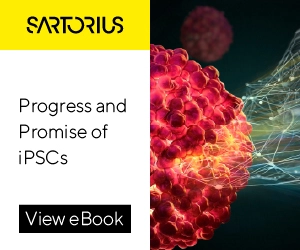In the fast-paced and competitive world of biotechnology, crafting a standout resume is crucial for landing your dream job. A well-crafted resume not only showcases your qualifications but also highlights your unique skills and experiences that make you the ideal candidate for biotech roles. This article aims to provide valuable insights and tips for creating a compelling biotech resume that captures recruiters’ attention and sets you apart from the competition.
Tip 1: Capturing Attention in Seconds
The first few seconds of a recruiter’s glance over your resume can make all the difference. In a stack of hundreds of resumes, yours needs to stand out immediately. This is where the reverse chronological format plays a pivotal role. Placing key information, such as your most recent and relevant experiences, at the beginning of your resume is essential. Greg Wyatt, founder of Bircham Wyatt Recruitment, emphasizes, “The contents of the first half of the first page of your resume is what really matters.”
Recruiters are looking for specific information that highlights your suitability for the role. Therefore, it’s crucial to tailor your resume to the job description. Roohi Mariam Peter, an expert in biotech recruitment, advises, “It is a marketing exercise to allow the reader to see you as a great candidate.” This means structuring your resume in a way that immediately showcases your qualifications and achievements.
Industry experts stress the importance of a clear and concise resume that effectively communicates your skills and experiences. A cluttered or poorly organized resume can lead to your qualifications being overlooked. As such, mastering the art of capturing attention in seconds through strategic formatting and content placement is key to creating a standout biotech resume.
Tip 2: Tailoring Content for Your Employers
In the competitive landscape of biotechnology, simply listing qualifications on your resume is no longer sufficient. Employers are seeking candidates who can demonstrate their value through tangible achievements and experiences. It’s essential to showcase not just what you’ve done but also how your contributions have added value to previous roles and projects.
Aligning past experiences with the specific needs of the employer is a critical aspect of tailoring your resume. Researching the company and understanding its goals, challenges, and industry trends can help you customize your resume to highlight your relevant skills and accomplishments. For example, if the company is focused on developing groundbreaking therapies for rare diseases, emphasizing your experience in rare disease research or drug development can make your resume more compelling.
Highlighting transferable skills is another effective strategy. These are skills that you’ve gained in one context but can be applied to different roles or industries. For instance, project management, communication skills, and data analysis are highly transferable skills that are valued in the biotech sector. By showcasing how you’ve used these skills to achieve results in previous roles, you demonstrate your ability to adapt and thrive in diverse environments.
Here are examples of effective ways to tailor content based on different career paths within biotech:
- Research and Development (R&D):
- Emphasize your research experience, including publications, patents, and contributions to scientific advancements.
- Highlight your expertise in experimental design, data analysis, and laboratory techniques relevant to R&D projects.
- Showcase any collaborations with cross-functional teams, academic institutions, or industry partners.
- Clinical Trials Management:
- Detail your experience in coordinating clinical trials, including protocol development, participant recruitment, and regulatory compliance.
- Highlight your knowledge of Good Clinical Practice (GCP) guidelines and regulatory requirements in the biotech and pharmaceutical industries.
- Showcase successful trial outcomes, patient enrollment achievements, and contributions to data analysis and reporting.
- Regulatory Affairs:
- Highlight your understanding of regulatory processes, submissions, and approvals in biotech and healthcare sectors.
- Showcase your role in ensuring compliance with FDA, EMA, or other regulatory bodies’ requirements.
- Emphasize any experience in preparing regulatory documents, responding to inquiries, and participating in audits or inspections.
- Bioinformatics and Data Analysis:
- Showcase your proficiency in bioinformatics tools, data mining, statistical analysis, and machine learning techniques.
- Highlight your contributions to genomic data analysis, biomarker discovery, or personalized medicine initiatives.
- Emphasize your ability to derive actionable insights from complex biological datasets and drive data-driven decision-making.
Tailoring your resume content to align with specific career paths within biotech demonstrates your understanding of industry nuances and your readiness to contribute effectively to the organization’s goals.
Tip 3: Optimizing Job Titles and Keywords
Crafting an effective resume involves more than just listing job titles and responsibilities. It requires strategic optimization of job titles and keywords to catch the recruiter’s attention and align with the employer’s needs.
Importance of Job Titles: Job titles play a significant role in communicating your level of expertise and responsibilities in previous roles. However, it’s essential to ensure that your job titles accurately reflect your actual duties and accomplishments. Adjusting job titles to better align with industry standards or highlight specific skills can enhance the impact of your resume. For example, changing a generic title like “Research Associate” to “Genomics Research Specialist” can provide a clearer picture of your expertise.
Strategic Keyword Selection: Keywords are critical elements in modern resumes, especially for ATS (Applicant Tracking System) compatibility. These are terms or phrases that are relevant to the job description and industry. Strategic keyword selection involves identifying key skills, qualifications, and industry-specific terms that recruiters are likely to search for. Incorporating these keywords naturally throughout your resume, particularly in the summary, skills section, and job descriptions, can improve your chances of getting noticed by recruiters.
Tips for Using Relevant Keywords:
- Review Job Descriptions: Analyze job descriptions for the roles you’re targeting and identify recurring keywords and skills.
- Tailor Your Resume: Customize your resume for each application by incorporating relevant keywords that match the job requirements.
- Use Variations: Include variations of keywords (e.g., synonyms, acronyms) to cover a broader range of search terms.
- Avoid Keyword Stuffing: While keywords are important, avoid overloading your resume with too many keywords. Focus on quality and relevance.
- Showcase Skills with Examples: Instead of just listing keywords, provide concrete examples of how you’ve applied those skills in previous roles.
By optimizing job titles and strategically incorporating relevant keywords, you can enhance the visibility and impact of your resume, increasing your chances of getting noticed by recruiters and landing interviews in the competitive biotech industry.
Tip 4: Mastering Resume Formatting
A well-formatted resume is crucial for several reasons, especially in today’s digital age where Applicant Tracking Systems (ATS) are commonly used by employers to streamline the hiring process. Here are key points to consider:
Significance of ATS Compatibility:
- Many companies use ATS to manage and filter through a large volume of resumes efficiently.
- ATS scans resumes for keywords, formatting, and specific criteria set by employers to identify qualified candidates.
- A well-formatted resume increases the chances of passing through ATS and reaching human recruiters for further consideration.
Guidance on Formatting:
- Avoid overly complex formats, fancy fonts, or excessive use of graphics that can confuse ATS and hinder readability.
- Use standard fonts like Arial, Calibri, or Times New Roman in a readable font size (10-12 points) to ensure clarity.
- Organize your resume with clear section headings (e.g., Education, Experience, Skills) and bullet points for easy scanning.
- Use consistent formatting throughout the document, such as consistent spacing, margins, and alignment, to maintain a professional appearance.
Importance of Clean Design and Layout:
- A clean and well-organized design creates a positive first impression on recruiters and reflects professionalism.
- Use white space effectively to balance content and improve readability.
- Highlight key information such as job titles, company names, dates, and achievements to draw attention.
- Incorporate a professional summary or objective statement at the beginning to provide a snapshot of your qualifications and career goals.
Overall, prioritizing clarity, simplicity, and ATS compatibility in your resume formatting enhances your chances of getting noticed by recruiters and progressing further in the hiring process.
Tip 5: Enhancing Your Resume with Contact Info, References, and Tools
Enhancing your resume with contact info, references, and tools is crucial for presenting yourself effectively to potential employers. Ensure your contact information is up-to-date and includes professional email addresses and phone numbers. Including credible references adds credibility to your resume. While AI tools can aid in resume creation, avoid relying too much on generic content. Tailor your resume to showcase relevant experiences and skills, especially for recent graduates, to stand out in the competitive job market.
Importance of Up-to-Date Contact Information and References:
- Up-to-date contact information, including your full name, professional email address, phone number, and LinkedIn profile (if available), is essential for recruiters to contact you easily.
- Including references from previous employers or academic mentors can add credibility to your resume. Ensure you have permission from your references before listing them.
Role of AI Tools in Resume Creation:
- AI tools can be helpful in generating resume content, formatting, and optimizing keywords for ATS compatibility.
- However, caution against over-reliance on generic templates or content. Tailor your resume to each job application to highlight relevant experiences and skills.
Tips for Recent Graduates:
- Showcase relevant experiences such as internships, research projects, coursework, and extracurricular activities that demonstrate your skills and knowledge.
- Include certifications, awards, or volunteer work related to biotechnology to showcase your commitment to the field.
- Use action verbs and quantifiable achievements to highlight your contributions and impact in previous roles or projects.
Conclusion
Creating an effective resume involves more than just listing qualifications; it’s about presenting yourself as a strong candidate with valuable skills and experiences. By ensuring up-to-date contact information, including credible references, and leveraging AI tools wisely, you can enhance your resume’s impact.
For recent graduates, focus on showcasing relevant experiences, skills, and achievements that demonstrate your readiness to contribute to the biotech industry. Tailor your resume to each job application and highlight your unique strengths to stand out in a competitive job market.
Remember, your resume is a reflection of your professional identity. Keep it concise, relevant, and tailored to the job you’re applying for to make a lasting impression on recruiters and potential employers.






